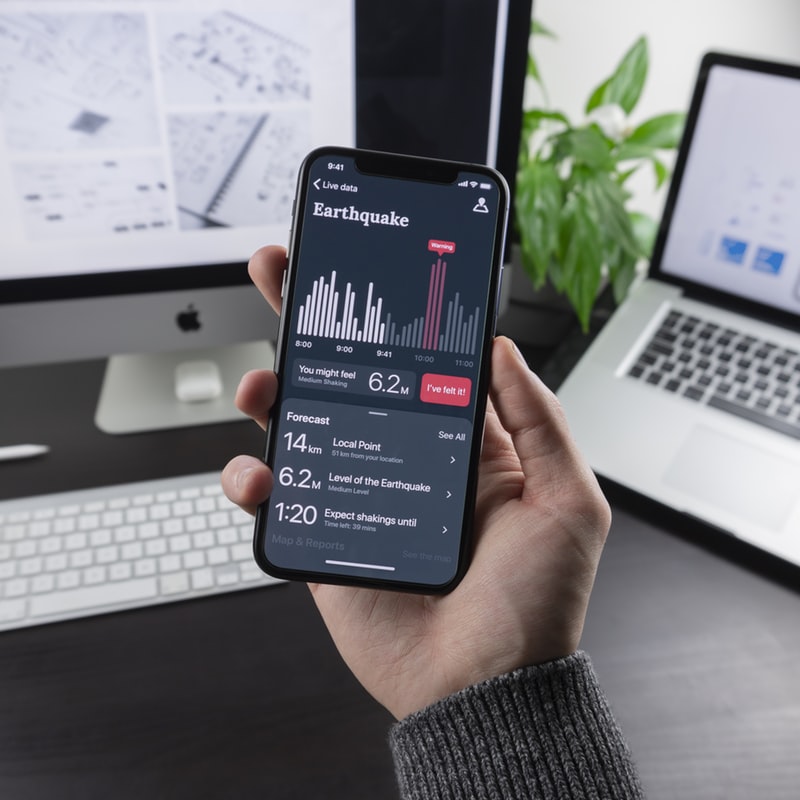If you find yourself thinking of killer app ideas now and then, but have no idea how to design an app, then this blog is just the thing that you need to read.
Designing an app is no rocket science. All you need is the right tools and right knowledge, and you can develop your own app.
However, there are some things that need your attention if you want to make your app a success in the market. For example, you need to understand the value of UX design in making your app a success.
Here is a step by step guide to making your own app. So what are you waiting for? Let’s dive in:
7 Tips To Build Your Own App

1# Start With a Sketch
It’s great that you have an idea in your head. But you need to sketch it down on something to see your vision clearly.
It is important because, more often than not, we are not able to see the flaws in our designs until we make a sketch.
The sole purpose of this practice is to make the idea tangible so that you can start working on it.
2# Market Research Is a Must
The biggest mistake that most developers do is that they conveniently skip market research.
If you are making an app just for fun and you don’t have any serious intentions to market it, then it’s alright.
But if you want to commercial your app, then you simply can’t afford to skip the market research.
3# Create Mockups That Are Practical
You’ve made sketches, that’s great. Now it’s time to take a step forward and create mockups of your app.
Make sure that your mockup is not overly ambitious because it is only going to make the whole process of making the app complex.
4# Now Comes the Graphic Design
By this point, your idea should start looking like a project. So, you should start working on the graphic design of your app.
It is a critical stage as you have to meet the user expectations through your app design. Make your design UX friendly if you want to make your app a success.
5# Use the Right Tools
Using the right tools makes all the difference in the overall look and functionality of your app. So, be careful while choosing your tools. First, make yourself familiar with the tools that you are going to use, then use them for your app.
If you are unfamiliar with the use of the tools, then the chances are that you’ll end up wasting both your time and money.
So, make sure that you learn their use from the right platform and practice their use before you actually get to the final steps of making your app.
6# Get It Tested Before Launching It
In the previous decade, the importance of user testing has increased significantly, and companies all around the world are paying boatloads of money to UX designers.
So, you can imagine the importance of getting your app tested to make sure that it is as user friendly as it gets.
Above all, user testing is the best way to find out how useful your app is. It may increase the overall cost of your project, but it’ll worth every penny. You’ll be able to fix all the glitches in your app before you launch it on the app store.
It is especially important if you have plans to commercial your application. You may have to increase your budget to get it tested, but it’ll be worth of every single penny that you’ll spend on it.
7# Make Amends According to User Feedback
While there are a lot of factors that can play a role in making your app a success, user feedback remains one of the oldest and the most reliable method factor of all. It is a great way to understand the requirements and expectations of the users.
After getting user feedback, you are able to analyze issues and problems in your application. Then, you make amends accordingly and make sure that your app is perfectly user-friendly when you finally launch it in the market.
EndNote
Learning is a process that never stops. You age and qualification doesn’t matter when you are determined to learn something. The same goes for the building a mobile or web application.
If you ever wanted make one of your own, then you should gear up and start working on learning the skills that are required to do so.
Lastly, follow all the tips and steps mentioned above and make sure that you don’t skip any step. It is vital because a single mistake or a single missing step can end you up with a mess and an application that won’t be functional or practical.
Author: Jessica Davison
















